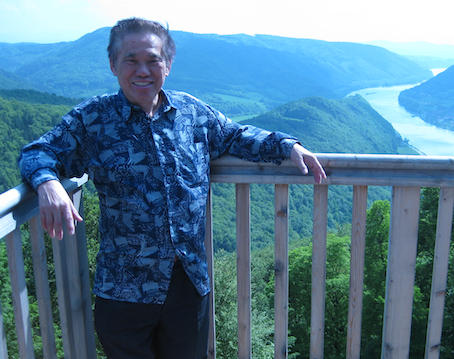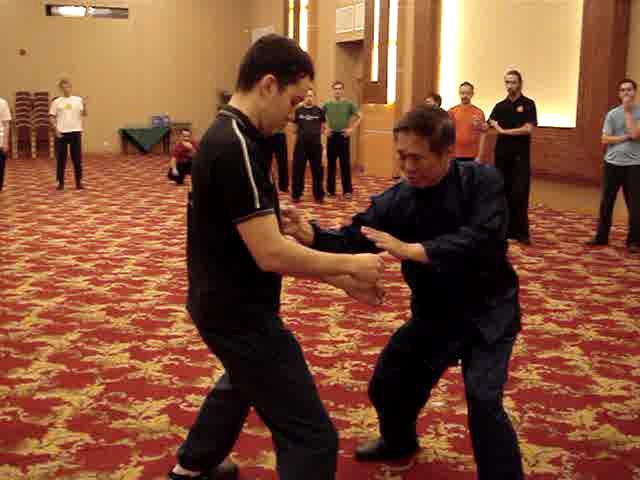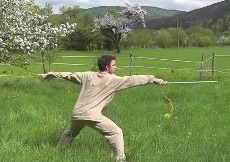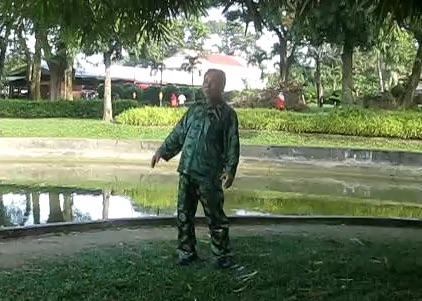SELECTION OF QUESTIONS AND ANSWERS
SEPTEMBER 2020 PART 2

Everyday is my birthday
Question 1
I am sure you are enjoying your Saturday. I wanted to thank you for such an amazing healing course you gave. It was truly humbling to receive the transmission of so many years of practice and skill. I enjoyed those days deeply with my parents.
— Jorge, USA
Answer
Every day is my birthday. Practicing chi kung gives me and all those who practice genuine chi kung, which is rare today, good health, vitality, longevity, peak performance and spiritual joys, irrespective of ones religion.
Your parents are among my best students. I am glad that they are doing very well.
Genuine chi kung healing is wonderful. I believe it will be the medicine in future.
Question 2
Charles, my son, is doing chi kung daily. He has not had any infection in more than 6 months. A month ago, we did a second surgery in his ear to check and the skin cyst he had is completely gone and he has recovered his full hearing.
However, now we are dealing with his seizures. Since December he has had 3 seizures. They tend to be short, 1 min or so. He had an EEG done and it came clean, but the pediatrician thinks this is a type of epilepsy that tends to disappear as kids get to 6 to 10 years of age.
Answer
I am sure your son, Charles, will benefit very much from genuine chi kung. Congratulations for his regular practice.
Just let him practice, without worrying about whether his forms are correct, Make it fun. Children are naturally relaxed and free of irrelevant thoughts, the two essential conditions for practicing genuine chi kung.
It is sufficient if he can practice just about 10 to 15 minutes per session, two sessions a day. If he just carries on practicing his chi kung, he will overcome seizures before he reaches 6 years of age.

Sticking-Hands is like Cloud-Hands
Question 3
Would XingYi Quan and Choe Family Wing Choon complement each other better as styles than Wing Choon and Baguazhang?
— John, Ireland
Answer
Xingyiquan is better than Baguazhang when it is used in complement with Wing Choon Kungfu. They have more features in common. But Xingyiquan and Wing Choon Kungfu, though similar in many aspects, are still different arts.
Xingyiquan uses internal force, whereas Wing Choon Kungfu uses body movement. A Xingyiquan practitioner would go in directly over the arm of an attacker to counter-attack. A Wing Choon practitioner would avoid the full force of the attacker by means of body movement to ward of the attack, and simultaneously counter-attack to the throat of the opponent with a finger-thrust.
There are other factors in combat, like the kind of teacher and the nature of students. If a teacher regards martial arts as expansion of mind, he may explore different ways of combat. If a student is less enterprising he may prefer just his way of training, like only Wing Choon Kungfu, Xinghyiquan, Baguazhang or his art.
Question 4
I noticed in the Wing Choon Set that Sifu composed there was an interlude of Cloud Hands which reminded me of Cotton Palm. It seems that the flowing force of Cotton Palm might complement the hand strikes of Wing Choon and give the Wing Choon fighter an opportunity to amplify his internal force. Might Wing Choon contribute anything to the Cotton Palm exponent?
Answer
The "Sticking-Hand of Choe Family Wing Choon" (which may be different from the popular style of Wing Choon from Hong Kong) is similar to Cloud Hands of Cotton Palm. The "circling-hand" of Choe Family Wing Choon is similar to the "open" Cloud Hands, and the "pinning-hand" similar to "close" Cloud Hands.
I wish to emphasize that internal force is special. Not many people, including masters, may have a chance to develop internal force. In our school internal force is taken for granted. Even those who learn only chi kung, and not kungfu, develop some internal force, which is not just for combat but contributes to daily life.
The training of "Sticking-Hands" and of "Cloud Hands" complement each other. It can, for example, make the hard strikes of Wing Choon softer but with much force, and the direct strike of Xingyiquan more sensitive, i.e. a Xingyiquan practitioner can sense the movements or intention of an opponent. More significantly, it will enhance daily life.

Wudang Sword performed by Sifu Leo
Question 5
I enjoyed immensely reading Sifu's manuscript on Wing Choon as well as re-reading the "Complete Book of Chinese Medicine". Sifu's writing style is simple, direct and effective. I wondered if Sifu could please share any writing tips.
Answer
Thank you for your compliments on my writing skills. Here are some writing tips.
1. Write as if you were speaking.
2. Make your writing readable. One good way is to add humour. Another good way is to approach a new topic from a fresh angle. For example, I mention that good writing is like a lady's skirt. It is long enough to cover important points, but short enough to be interesting.
3. Ensure that your writing is beneficial, i.e. readers should benefit from their reading, like learning something new, or getting pleasure from the reading.
Question 6
I'm currently preparing to teach my most advanced Tai Chi Chuan group the Wudang Sword, which is something I've been looking forward to for quite a long time.
In the picture series of the Wudang Sword, I noticed that pattern No. 10 is called "Golden Dragon Shoots Tongue". I have always taken it as a "Green Dragon Shoots Pearl". Is there a difference between those two patterns/names?
One of my students asked me whether the meridians could flow the other way round too. Do you know if this would be possible or if this could be a sign of malfunctioning?
— Sifu Leonard Lackinger, Shaolin Wahnam Wien
Answer
The Wudang Sword is a lovely set. As you know well, Wudang is famous for its sword. All Wudang students used the sword, while all Shaolin students used the staff.
In "Golden Dragon Shoots Tongue" the palm (if open) faces upward, whereas in "Green Dragon Shoots Pearl" the palm faces downward.
The chi in the three hand yin meridians flow downwards from shoulders to fingers, whereas the three hand yang meridians flow upwards from fingers to shoulders. This is the normal way of flow. But if a person with strong will can cause the flow the other way round.
If the flow is the other way round for a long time -- i.e. if the yin chi flows upwards and the yang chi flows downwards -- it becomes a malfunction.

Flowing Breeze Swaying Willow
Question 7
Another student asked if she could stay longer in standing meditation at the end of the session or if she could practice it separately from her usual chi kung session. What would be you answer?
Answer
A student can stay longer in standing meditation at the end of a practice session for any reason. If his (or her) aim is to perform the Wudang Sword set, he just performs the Wudang Sword set. Most people do not even stay in standing meditation for a short time. We do so because it brings us benefits.
There are better methods to train a clear mind. One excellent method is to train "Lifting the Sky" focusing on breathing or form. It is using one thought to represent myriad thoughts.
Standing Zen is an excellent method to train a clear mind. For most people, however, it may make their mind more confused as myriad thoughts come to their mind.
Question 8
If someone wants to specifically train a clear mind, would it be advisable to practice Standing Zen only? Should the session still include chi flow towards the end of the session?
Answer
It is good to have a chi flow at the end of a Wudang Sword session, or any kungfu set. It is "Flowing Breeze Swaying Willow", or "Yew Foong Pai Lau" in Cantonese Chinese. It clears away any harmful effects unwittingly caused, and enhances performance.
If someone wants to have these benefits -- like clearing away harmful effects, enhancing performance, giving health, vitality and longevity, peak performance and spiritual joys -- it is better to have a separate chi flow.
It is good to include chi flow at the end of a session, even for a short time, as it brings us a lot of benefits. When I was training as a student in Sifu Ho Fatt Nam's school, we often had "Yew Foong Pai Lau" unconsciously. At that time I did not know of its many benefits.
But the chi flow was only for a short time. We didn't have separate chi flow sessions. My sifu had good health, vitality, longevity, peak performance and spiritual joys, so did his sifu and the Venerable Jiang Nan, our First Patriarch.
There is truth in the saying that "when one is accomplished in the genuine Shaolin arts, it is better than changing stones to gold by touch."
If you have any questions, please e-mail them to Grandmaster Wong via his Secretary at secretary@shaolin.org stating your name, country and e-mail address.
LINKS
Selected Reading
- Is Qigong Practice Real; is Eating Food Real?
- Sticking Hands and No-Shadow Kicks
- Grasping Sparrow's Tail: the Mechanics of Taijiquan Movements
- Taiji Traveling Dragon Spear
- Colourful Streets of Tiruvannamalai
